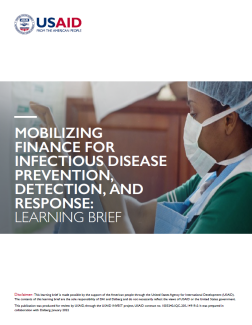The ongoing COVID-19 pandemic has exacerbated weaknesses in the global health care system. Annual investments in infectious disease prevention research have declined since 2007, while risks of antimicrobial resistance and pathogens with pandemic potential have increased. Health care systems were underfunded and understaffed before COVID-19 emerged. The pandemic has worsened conditions. Significant investment is required to better prepare for infectious disease outbreaks and strengthen health systems worldwide.
An estimated $75 billion is needed in the next five years for global pandemic prevention detection and response. Insufficient funding has been allocated. In 2019, funding for this issue was only $374 million. Moreover, the estimated funding gap to reach the 16 Sustainable Development Goals (SDGs) related to health targets in low- to middle-income countries (LMICs) was $134 billion in 2016 and is expected to triple by 2030. With over $229 trillion available in global capital markets, private sector investment can play a significant role in closing gaps in global health care funding.
USAID and other donors can play a key role in mobilizing finance and catalyzing private sector engagement for addressing infectious diseases and strengthening health systems. Donors can foster incentives for public and private sector actors to collaborate and accelerate investments to support infectious disease prevention, detection, and response. Many areas of health care are managed by the public sector for policy reasons, while other areas are challenging to make commercially attractive, requiring ongoing public support.Yet private actors already provide leadership in the health sector and many more opportunities for private sector action and investment exist.
This Learning Brief synthesizes lessons that can inform USAID engagement in mobilizing finance around infectious disease prevention, detection, and response. USAID can support system strengthening to help meet infectious disease related challenges.This learning brief is one of three complementary documents including a case study analysis that illustrates various models for health finance and a guidance note, which provides an overview of donor support for blended finance.

